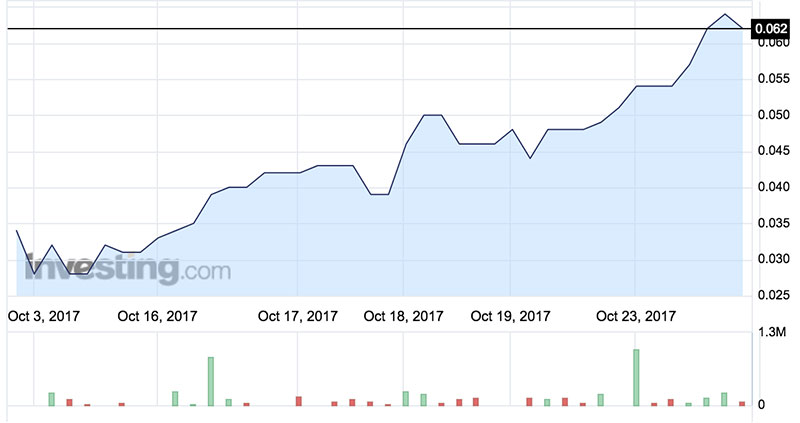Diamonds are POZ’s new best friend – that’s no fertiliser
Mining
Diamonds clearly beat fertiliser as an investment choice.
Switching from a proposal to mine a crop nutrient to digging up the world’s most exclusive body adornment is the primary reason for POZ Minerals shares doubling in price since last week.
Whether POZ — which used to be called Phosphate Australia — will be able to generate fatter profits from gems than phosphate is a question for the future.
All that matters today is that POZ (ASX:POZ) has dealt itself a seat at one of the world’s most exclusive mining clubs.
It’s almost certain to have a fistful of diamonds to display early next year, potentially eclipsing the fistfuls of gold nuggets being flashed by Pilbara gold explorers.
The reason for confidence over POZ finding diamonds is that it has secured ownership of a tract of land which has a diamond production track record that dates back almost 40 years, though not always profitably.

The plan devised by POZ is to re-visit the Ellendale diamond discovery in the West Kimberley region of WA using the latest version of ground penetrating radar (GPR) to find pods of diamonds potentially caught in gravel and “traps” along ancient river systems which have been long buried under surface soil.
It’s the use of advanced GPR which might prove to be a breakthrough technology at Ellendale — which was one of Australia’s first significant diamond discoveries with gems recovered as far back as the 1970s.
Made by the Ashton Joint Venture, in which Rio Tinto (then CRA) was the leader, Ellendale had all the makings of a major diamond project thanks to multiple sources (or swarm) of extinct volcanic “pipes” where diamonds are formed, and in alluvial deposits where diamonds have been deposited as the pipes erode, in some cases by as much as 90 metres.
Fabulous as that sounds, especially as Ellendale was a source of prized “fancy yellow” gems, the depressing truth is that it has always frustrated owners, in one case because Rio Tinto flooded the diamond market with gems from its bigger and better Argyle discovery on the eastern side of the Kimberley region.
It was Argyle’s enormous volumes of small gems which overwhelmed diamond cutting centres such as those in the Indian city of Mumbai and also triggered a price-cutting war with the world’s dominant diamond merchant, De Beers.
Diamond war the kiss of death
For Ellendale the diamond war was a kiss of death because Rio Tinto opted to not develop it as a competitor with Argyle, but also because Ellendale’s economics were not robust.
The law then took a hand in Ellendale’s fate with a small diamond explorer, Kimberley Diamonds, lodging an appeal under the “use-it, or lose-it” provision of WA’s Mining Act which requires the development of a discovery if it looks to be commercial.
Rio Tinto chose to not forfeit Ellendale, but did succumb to the pressure, selling its discovery to Kimberley which proceeded to develop a number of open pit mines, focussing on Pipe 4 and Pipe 9 – though low prices continued to dog the project which was eventually closed.
Other owners have come and gone with the last collapsing into bankruptcy, leaving unsold diamonds with its liquidator, creating an opportunity for POZ to buy a sample of the gems for comparative testing with what it might find.
Keeping it simple
Keeping it simple is the key to what POZ is doing with the return to Ellendale. There is not, at this stage, a hunt for pipes or other sources of the diamonds — just a focus on the old drainage systems with several early targets for excavation already identified by GPR.
Not a new technology, GPR dates back more than a century and was first used to measure the depth of glaciers. Advances in recent years have been significant with POZ crews able to use a sled-mounted system pulled by one man across the target areas, pumping down a radar pulse and recording the reflected signal to determine what might lie at depth — with river gravels the primary target.
Early days as it might be for POZ and its Ellendale adventure but some of the targets in drainage systems appear quite substantial including Channel 1 which is more than 3000m long and up to 200m wide with potential diamond-bearing gravels under just three-to-five metres of surface soil.
Previous sampling along the channel has yielded encouraging diamond grades up to 6.03 carats per hundred tonnes of gravel.
Another target called Pothole is more than 800m long and between 50 and 170m wide, with POZ speculating that it might be the site of a waterfall along the old drainage system which could make it a source of enriched diamond deposition.
A natural sorting process
For anyone unfamiliar with the hunt for alluvial diamonds it is often the transported gems which yield the highest prices because of a natural sorting process (being bashed against other rocks in the river or ocean) has separated the weak and the strong.
The best example of that process is the skeleton coast of Namibia, home of the world’s best diamonds which have been carried down the Orange, and other rivers, before being washed north by the powerful Benguela current in the South Atlantic.
In that region, both onshore and offshore, enriched pods of gems are found trapped in reef systems, waiting to be sucked up by large vacuum cleaners, some mounted on ships.
The key to POZ being a success at Ellendale will be its ability to keep the mining process simple to minimise costs and for diamond demand to remain strong.
Last week’s share price rise lifted POZ from 3.1c to 5.1c, a price which values the company at a lowly $8.2 million, but which also leaves plenty of room for re-rating as news flows in from exploration and gravel processing crews starting early next year.